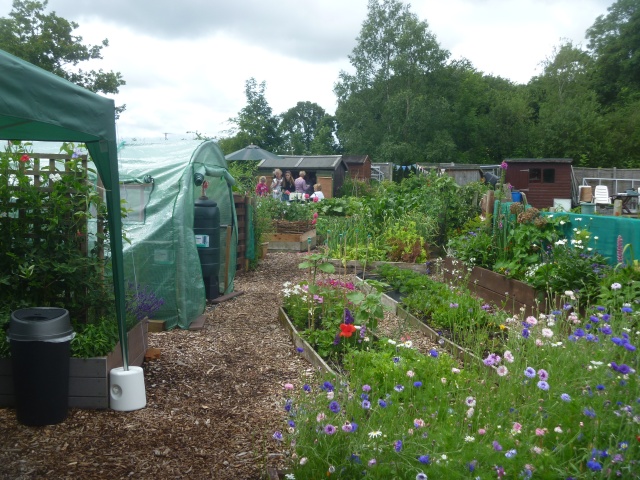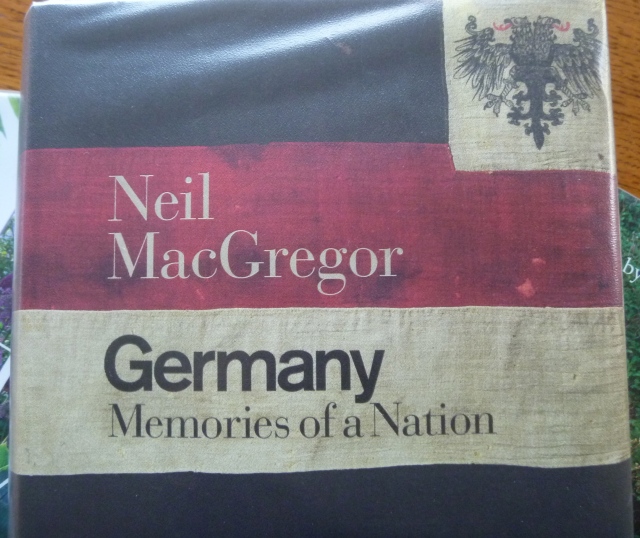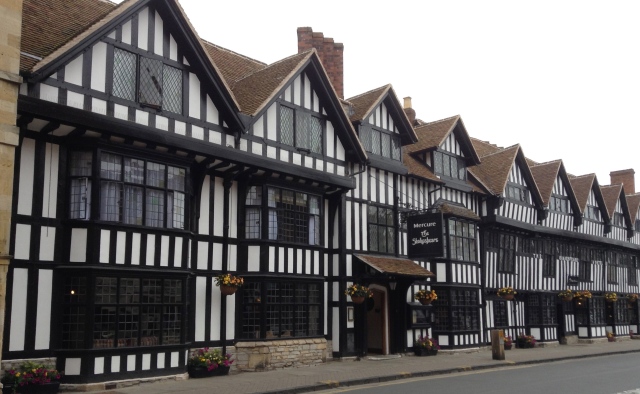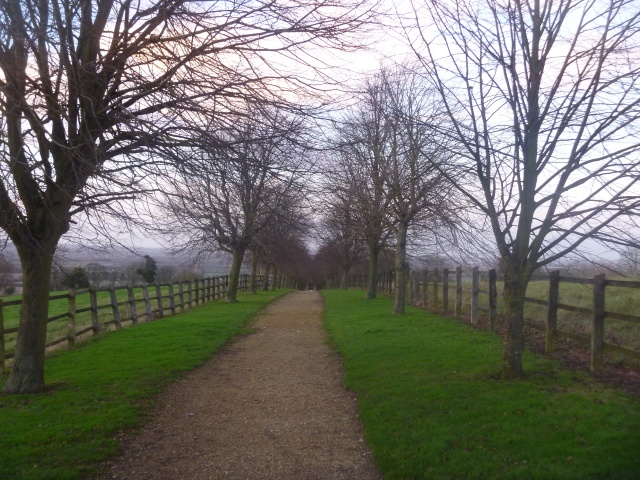Some weeks ago an invitation (nay, a command) arrived to attend the Christmas celebration at Temple Newsam House yesterday afternoon. It was issued by Sir Arthur Ingram to all tenants on the Estate.
Tag Archives: shakespeare
We are such stuff as dreams are made on: Shakespeare crops up in the most unusual of places
Report of a Sunday in Lancashire
Last weekend I ventured over to Lancashire. I’d been invited to a garden party at a friend’s allotment (dress code: fascinator and wellies) in Higher Walton, near Preston. It was raining as I left home in Yorkshire but by the time I was across the Pennines it had stopped and we enjoyed a Jacob’s Join lunch in the open air. I must say that allotment gardening, and gardening in general, look like an awful lot of hard work … but the gain is tremendous; Kath’s plot exceeded all expectations.
Welcome to the Party!
Wildflower Bed
Kath’s Bee Hotel
It turned out that the allotment is just a few minutes from Hoghton Tower so after lunch two of us made our way to the Tower where we came across a reenactment of the Battle of Preston (1715). Amongst the reenactors I was surprised to see the Leeds Waits a group of musicians specialising in medieval music and, incidentally, my next-door neighbours!
“The battle of Preston at Houghton Tower 2015 : a short film showing the musicians that used to play at executions!”
We booked a tour of the house at 2.30 and made for the tea room for refreshments beforehand.
Some significant people are associated with Hoghton. In particular our guide was impressed by the James I connection. James is reported to have spent a few nights at the Tower in 1617 and it was here that he was so pleased with his roast beef dinner that he knighted the joint Sir Loin. James was apparently a small chap and instead of dismounting outside in the courtyard he rode his horse right into the house and up the stairs.
It is also reported that William Shakespeare spent some time here during the period known as his ‘lost years’.
Charles Dickens was also familiar with the house and wrote a short story centred around it including a description of the building as a farm house: George Silverman’s Explanation.
“And so, by fragments of an ancient terrace, and by some rugged outbuildings that had once been fortified, and passing under a ruined gateway, we came to the old farm-house in the thick stone wall outside the old quadrangle of Hoghton Towers.”
The “quadrangle” today
Read here about another blogger’s visit to Hoghton.
The Battle’s Over – Time to go Home
A Beautiful Oasis of Peace and Tranquility in the Heart of Durham City : Crook Hall and Gardens
Durham Cathedral from Crook Hall Tea Room
Writing this on a warm sunny Easter Monday it’s hard to believe that last Tuesday in Durham I managed to avoid snow showers whilst meeting a friend from my online book group for a day out at Crook Hall and Gardens in Durham.
This fascinating house and garden deserve another visit in the summer time when there will be more colour and a less forbidding sky. However, we did manage to visit each garden and delighted in what we saw.
The Hall is 13th century and provides a spectacular backdrop to the stunning gardens. It’s a short walk from the bustling city centre to this oasis of peace. There’s a tea room in the Georgian wing served by the house kitchen and you can visit many of the rooms in the house including the medieval hall with exposed beams.
The Orchard
The Shakespeare Garden inspired by a book on plants in Shakespeare’s plays
Shakespeare in his garden
The Moat Pool
The Cathedral Garden : the beds echo stained glass windows
Durham Cathedral from the Cathedral Garden: the Topiary Box represent the Monks
Be entertained by Clare Balding as she takes a walk with the owners of Crook Hall and finds out about the history of Crook Hall and Gardens :
Germany : Memories of a Nation
Over the last couple of days I’ve been reading the book of this title that accompanied the British Museum exhibition of the same name and the series of BBC Radio 4 talks by its author (and British Museum director), Neil MacGregor.
http://www.britishmuseum.org/whats_on/past_exhibitions/2014/germany_memories_of_a_nation.aspx
http://www.bbc.co.uk/programmes/b04dwbwz
It’s a weighty hardback book, nearly six hundred pages long and with masses of photos and maps. There are 30 chapters. This is no conventional history of Germany. Instead, MacGregor chooses to focus (as he did in his ground-breaking History of the World in 100 Objects exhibition, talks and book which has generated umpteen spin-offs) on objects and pictures which he feels relate to a “German history [which] may be inherently fragmented, but … contains a large number of widely shared memories, awarenesses and experiences”. Quotations here are all taken from the book.
8 Johann Wolfgang von Goethe
Each of the chapters was absorbing but several held particular interest for me. I studied German for four years at school to A-level and have visited Germany a few times. So when I read the chapter “One Nation under Goethe” I was straightaway reminded of his “Urfaust” (the earliest form of his Faust work) which we studied for A-level. But most of the chapter presented a picture of the German equivalent of William Shakespeare which I did not recognise.
Johann Wolfgang von Goethe by Johann Tischbein and my 1968 edition of Faust Part One
The object MacGregor focuses on is the Tischbein portrait of Goethe (1786-7) which shows the playwright (and polymath) in a classical setting “out of these survivors of a dead culture, Goethe will make something living”. Interestingly, for his fourth birthday Goethe was given, by his father, a toy puppet theatre which can still be seen today in his birthplace museum in Frankfurt. Goethe later wrote that this gift was to change his life. He was to become especially interested in Shakespeare and it was the influence of his (Shakespeare’s) writing that led Goethe to write his first work “The Sorrows of Young Werther“. MacGregor declares “Werther established German for the first time as a European literary language”.
17 An artist for all Germans
Self-Portrait – Albrecht Durer (1500)
The artist Albrecht Durer (1471-1528) created the first and possibly the most celebrated logo of all German logos. I remembered visiting the British Museum as a student to see The Graphic Work of Albrecht Durer in late 1971 or early 1972. This was an exhibition of Durer’s prints and drawings in celebration of the 500th anniversary of his birth. I remember seeing his Praying Hands drawing and Young Hare etching in a beautiful dark room where only the pictures were lit. More recently I visited a show of his work at the Lady Lever Art Gallery in Port Sunlight on Merseyside, ‘Durer and Italy’, in the summer of 2010.
20 Cradle of Modernism
[source]
The cradle in question was designed by Peter Keler in 1922 and is still in production today and the modernist movement with which chapter 20 is concerned is Bauhaus. Elegant and simple sums up Bauhaus design established in Weimar in 1919 by Walter Gropius. Inspired by historic German values it was to “combine the medieval-guild traditions of communal working with the most rigorous principles of modern design and the enormous potential of industrial production”. Funding for the Bauhaus was cut in 1924 when the Social Democrats lost power in Thuringia. In 1925 it moved to Dessau. Although intending to be apolitical, when the Nazis took control of Dessau the Bauhaus moved again and to Berlin but was finally closed in 1933 when it had been “condemned by the Nazis as a centre of cultural Bolshevism”. There is now a Bauhaus Archive in Berlin which I have seen from a tour boat but not yet visited (it’s on my list!).
Bauhaus Archive, Berlin
22 The Suffering Witness
Here is my photo (2009) of the Neue Wache or “New Guard House” built by Karl Friedrich Schinkel in Berlin. The sculpture is an enlarged version of “Mother with her dead son” by Kaethe Kollwitz. The light is from the oculus in the roof. The memorial to the fallen of the war lies directly under the oculus exposed to all the Berlin weather.
In this chapter MacGregor talks about the life and work of the sculptor and printmaker Kaethe Kollwitz (1867-1945). The sculpture above, within the Neue Wache, was chosen by Chancellor Helmut Kohl in 1993 as a “memorial to the Victims of War and Tyranny” to be placed in this “austere neo-classical building in the heart of Berlin”.
I also recommend the chapters on Gutenberg (16 In the Beginning was the Printer); on the Hanseatic city-states (13 The Baltic Brothers) and on beer and sausages (10 One People, Many Sausages)!
Two Henrys : The Fourth Part Two and Moore
From Renishaw Hall on the eighteenth of June we made our way to Stratford upon Avon where we checked in at our hotel in time to wash and brush up before heading on foot (only a few minutes distant) to the Royal Shakespeare Theatre by the River Avon. It was a lovely warm evening and there were lots of people about enjoying relaxing by the River and the Canal.
We were booked for supper at The Rooftop Restaurant followed by a performance of Shakespeare’s Henry IV Part Two by the Royal Shakespeare Company. This was no dull, boring history play rather it seemed to me dominated by comedy. Anthony Sher played Falstaff and the whole performance was being filmed and relayed simultaneously to a greater audience in cinemas throughout the country. This meant that the director, Greg Doran, came on stage at the beginning to introduce the play.
The Swans of Avon and Clopton Bridge from The Rooftop Restaurant
River Avon and Spire of Holy Trinity church from The Rooftop Restaurant
The Shakespeare Hotel – one time I stayed here
The Grammar School, Stratford upon Avon
The Birthplace
The next morning after a leisurely breakfast and opportunity to take a walk in Stratford we headed off to nearby Compton Verney where we had a full programme of tours, a sandwich lunch and time also to walk in the park, visit the chapel and spend time (and money) in the attractive gift shop.
“10.30am Depart for Compton Verney. Set in a park designed by the ubiquitous ‘Capability’ Brown, this long-derelict house of the Willoughby de Broke family is now resurgent under the inspiration of the [Peter] Moore’s Foundation. The collections are numerous and varied. The morning will be given over to the current display of sculptures by Henry Moore and Auguste Rodin, while the afternoon will feature a guided tour of salient points of the main collection which encompasses British Portraits, Chinese Ceramics and Bronzes, British Folk Art and for Textile-buffs The Marx-Lambert Collection. You will be free to visit those parts of the collection which are your particular interest. www.comptonverney.org.uk” [Our Programme]
Moore – Rodin
Rodin’s Burghers of Calais
Exhibition
Moore Rodin
15 February 2014 to 31 August 2014
10th Anniversary Year – Moore Rodin at Compton Verney
This ground-breaking international exhibition compares the work of two giants of modern sculpture: Henry Moore and Auguste Rodin. This is the first exhibition to be devoted exclusively to these artists, with major works being displayed in our ‘Capability’ Brown landscape as well as in our exhibition spaces.
Fallen Caryatid by Rodin
Reclining Figure : Bunched by Henry Moore
In the grounds
Enjoy eleven large scale works which complement, challenge and create new perspectives to vistas ‘Capability’ Brown formed in the 1760s. Amongst these amazing pieces is one of Rodin’s most famous works, Monument to the Burghers of Calais (usually on display outside the Houses of Parliament), Moore’s magnificent monumental Three Piece Sculpture: Vertebrae and The Arch.
Rodin’s Walking Man on Column
Henry Moore Upright Motive No. 9 with Chapel
Inside the galleries
Gain an amazing insight into the works of these two artists. Explore the parallels between their treatment of the figure through a beautiful collection of drawings and models made for larger works. See a special display curated by Moore’s daughter Mary which reveals both artists as keen collectors of antiquities and found objects which profoundly influenced their work. The final treat is a display of rarely seen archival documents and photographs taken by Henry Moore revealing that … ‘as time has gone on, my admiration for Rodin has grown and grown’.
After our sandwich lunch I wandered round the grounds and visited the Capability Brown Chapel. This was built in 1776 as part of the relandscaping of the site and is one of the few surviving Georgian chapels in Britain, and one of the very few remaining architectural works by ‘Capability’ Brown. It is currently undergoing a restoration project and more funds are needed to support this work as it’s hoped to use the building in future for music and learning.
The Chapel Interior
And in the afternoon we had a tour of the permanent collection – British Portraits
Beautiful Displays
and British Folk Art. Currently there is an exhibition of British Folk Art at Tate Britain and this will then come to Compton Verney from 27 September 2014 to 14 December 2014.
British Folk Art
Weather Vane
Quilt
And finally, the Marx-Lambert Collection.
“Enid Marx (1902-1998) was one of the brightest design stars to emerge from the Design School of London’s Royal College of Art (RCA) during the interwar years. She was an author and illustrator of children’s books, a book designer, a printmaker, a textile designer and a painter.
The Marx-Lambert collection at Compton Verney features both work produced by Marx and a large number of pieces of folk or popular art which were collected by Marx and her friend Margaret Lambert (1906-95). These then inspired Marx’s own work -sometimes directly, as seen in the pair of ceramic wall-mounted cornucopia cases which inspired her ‘Cornucopia’ textile design.”
Canal Art and Wallpaper
A wonderful trip full of interest and variety marred only by a 3 hour delay on the M1 due to a lorry on fire.
The Pilgrim’s Progress and A Winter’s Tale – Some Literary Remains in Bedfordshire
The clues to the literary connections in the local area can always be found in the Landmark Library of any property.
John Bunyan was a Bedfordshire man. He was born in the village of Elstow in 1628 and he spent 12 years as a prisoner of conscience in Bedford Jail where he had the idea to write his most famous work. The Pilgrim’s Progress was published in two parts in 1678 and 1684. Bunyan died in Holborn in London in 1688 and I have seen his grave and memorial in Bunhill Fields Cemetery in London.
I discovered the existence of Houghton House not too far from Old Warden from another little series of books which I consult before making trips; the Heritage Unlocked series published by English Heritage.
I’m not a member of EH and to visit the remains of Houghton House, just outside the busy little town of Ampthill, it’s no advantage to be because it’s free to visit during daylight hours.
From the EH website :
“Houghton House today is the shell of a 17th century mansion commanding magnificent views, reputedly the inspiration for the ‘House [or Palace] Beautiful’ in John Bunyan’s Pilgrim’s Progress.
It was built around 1615 for Mary, Dowager Countess of Pembroke, in a mixture of Jacobean and Classical styles: the ground floors of two Italianate loggias survive, possibly the work of Inigo Jones.
Information panels describe the house, its owners and the surrounding hunting estate.”
The ruin of Houghton House is approached along a tree-lined track.
There are also many trees laden with mistletoe – giving quite a seasonal feel. Also, it was approaching dusk which increased the dramatic effect of the ruin but maybe my photos turned out a little on the dark side.
Houghton House “commands spectacular views over the Bedfordshire countryside and would have been a grand setting indeed for the countess’ social events.”
And in the History Album at Keeper’s Cottage we are informed of a Shakespearean connection to Old Warden :
“Warden Pear. A small pear used for cooking, the Warden Pear was the key ingredient in Warden Pies, which crop up here and there in Elizabethan and Stuart literature, most notably in Shakespeare’s Winter’s Tale , where the Clown almost gives the recipe : “I must have saffron to colour the warden pies; mace; dates? …nutmegs, seven; a race or two of ginger, byut that I may beg, four pounds of prunes and as many raisins o’ the sun” [Act IV, sc. Iii] Hot Warden Pies were still sold in Bedford in the nineteenth century.”
Taking Time at Waddesdon Manor – Diderot’s ‘Great Magician’
Blockbuster art exhibitions are all very well but to my mind Small is Beautiful.
Waddesdon Manor is a vast stately pile sitting in acres of grounds atop a hill and overlooking the neighbouring countryside in the county of Buckinghamshire. Baron Ferdinand de Rothschild planned and built Waddesdon during the last decades of the 19th century as a country retreat in the style of a Loire château. It was designed for him by French architect Gabriel-Hippolyte Destailleur.
Our main intention for driving from Stratford to Waddesdon was to view the recently opened Chardin exhibition: “Taking Time: Chardin’s Boy Building A House Of Cards and other paintings”. Jean-Simeon Chardin (1699-1779) lived and worked in Paris at first painting figures and later still life. He moved back to figure painting later in life. The idea for this particular exhibition came about when the Rothschild Trust recently acquired one of the Boy Building A House Of Cards paintings. That painting (shown in the poster above) is exhibited alongside 3 others on the same theme on loan from the Louvre, The National Gallery of Art, Washington and our own National Gallery in London.
In addition the Trustees and National Trust have assembled several other Chardins including a favourite of mine : Lady Taking Tea (on loan from The Hunterian in Glasgow):
Photo © The Hunterian Museum and Art Gallery, University of Glasgow 2012
and Girl With a Shuttlecock, 2 Cellar Boys and 2 Scullery Maids, plus engravings and etchings in the style of Chardin from The British Museum and private collections. All in all a delightful glimpse at colours, textures and expressions of 18th century French lives. By calling Chardin a great magician Diderot is saying that it is about – the “magic” of seeing the world clearly. Paying attention. Seeing what is there. (From a Guardian article in 2000).
The exhibition is tucked away in one room towards the end of the house tour. We missed much of the art and furnishings as we passed through the house but we did take a bit of time out to study another temporary display Playing, Learning, Flirting: Printed Board Games from 18th Century France. It was striking to note how similar these board games were to games still played today. We were also intrigued by all the Singerie or Monkey Tricks around the house. Dressing monkeys up in human costume was once a very popular and fashionable pastime: there are paintings and sculptures around the house. I was reminded somewhat of another popular theme also unfashionable in today’s enlightened times – the Blackamoor or Negro slave.
We enjoyed a delicious late light lunch in the lovely Manor Restaurant and visited the shop and wine shop (well there would be one here of course, Rothschilds!).
Later that evening after a pre-theatre supper in the Rooftop Restaurant we attended an RSC company performance in the Swan Theatre of Shakespeare’s Richard III. Part of a series of plays on the theme Nations at War that will include Shakespeare’s King John and Mexican playwright Luis Mario Moncado’s A Soldier in Every Son – the Rise of the Aztecs. What a day to remember!
Every Inch a King
What’s this? Me thinking I’m a theatre critic? How dare I? Well, of course, this isn’t really a critical review merely a comment on my feelings after seeing ‘King Lear’ at the West Yorkshire Playhouse last evening.
“KING LEAR
23 September 2011 to 22 October 2011
QUARRY THEATRE
King Lear abdicates the British throne, to divide his kingdom among his three daughters in proportion to their professed love of him. When Cordelia, his youngest and favourite daughter, refuses to flatter her father; she is disinherited and banished. King Lear, with its intense exploration of kinship, loyalty, old-age and madness is widely held as the greatest of Shakespeare’s tragedies; to some, it is the greatest play ever written. Award-winning stage, film and television actor Tim Pigott-Smith will perform the title role, directed by West Yorkshire Playhouse Artistic Director Ian Brown.”
Picture and Resumé from The West Yorkshire Playhouse website.
Over 25 years ago (is it really that long?) a dear friend, Mrs Wright, Snr., asked if I’d like to join her and subscribe to a season of plays at The Leeds Playhouse (as it was then). Of course, I did, and we have never looked back! Through the births of our children and various other upheavals we’ve stuck with our commitment and missed very few plays. In 1990 the old Leeds Playhouse was replaced by the West Yorkshire Playhouse and the ticketing became more complicated but we just stuck with our original plan and booked the longer running plays.
Yesterday evening we attended the last but one evening performances of King Lear. I don’t know whether this play will move to other theatres or even to The West End but it was a magnificent production and if you get the chance and enjoy Shakespeare – go see it! Tim Pigott-Smith (of ‘The Jewel in the Crown’ fame) stars in the title role. The final performance at Leeds is halfway through as I type.
The play opens strongly in reds and blacks and greys and there is no doubt who is in power and what form that power takes – it is King Lear and the power is absolute! Fast forward towards the end of the play and we see a desolate, senile and bereft Lear cradling his dead daughter Cordelia and we feel as exhausted, as surely the actors must do, with tragedy of it all.
Cordelia is played by Olivia Morgan. It’s her very first professional stage debut. How good is that?! To me it showed but was all the better for the ‘naivety’ – is that the right word? I think I read somewhere that Cordelia has just 120 lines but she’s pivotal to the play.
Photo : James Garnon [Mercutio] in the Globe’s 2004 Romeo and Juliet ( globe-education.org )
All evening I couldn’t get out of my mind of whom James Garnon (Edmund) reminded me. I checked the programme when I got home, found that he performed in Howard Brenton’s ‘Anne Boleyn’ at Shakespeare’s Globe which I saw in the summer and realised straightaway that he was James I. He is definitely one to watch.









































































